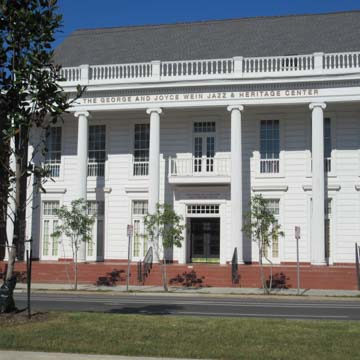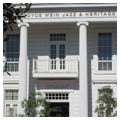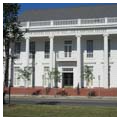This center began as two separate town houses built in the 1870s by Cuban-immigrant Jules LeBlanc and combined into a single house in the early twentieth century. For decades the building served as a funeral home, and because many jazz funeral processions started from here, it was ideally suited for its new function as a center of activities for the New Orleans Jazz and Heritage Festival and Foundation. The two-story white-painted wooden building retains its early-twentieth-century full-height Ionic-columned porch and has a balustrade along the roofline. The rear of the building, however, was reconstructed to include a 200-seat auditorium of contemporary design.
You are here
George and Joyce Wein Jazz and Heritage Center (Tharp Sontheimer Laudumiey Mortuary)
1870s; early 20th century altered; 2014, Eskew+Dumez+Ripple and Rick Fifield Architect. 1225 N. Rampart St.
If SAH Archipedia has been useful to you, please consider supporting it.
SAH Archipedia tells the story of the United States through its buildings, landscapes, and cities. This freely available resource empowers the public with authoritative knowledge that deepens their understanding and appreciation of the built environment. But the Society of Architectural Historians, which created SAH Archipedia with University of Virginia Press, needs your support to maintain the high-caliber research, writing, photography, cartography, editing, design, and programming that make SAH Archipedia a trusted online resource available to all who value the history of place, heritage tourism, and learning.





